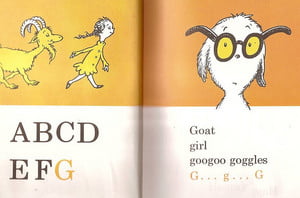Whether you homeschool or not, it’s useful to know how your child learns best. Sometimes it is equally helpful to know your particular learning style too, to understand how your child’s learning style and yours mesh—or clash. My daughter and I share the Read/Write learning style, but it sure opened my eyes when I found that her secondary learning method was auditory and mine is kinesthetic. So that’s why “you’ll get the feel of it if you practice” method wasn’t working for her!
Chances are good that you’ve learned how to cater to the style in which you learn best as you’ve grown. And your child will, too. But knowing his individual learning style can still help you to understand him , or to work with his teacher.
There are four basic styles of learning. There are
2. Aural/Auditory Learners
3. Read/Write Learners
Most people have a mix of two or even more preferred styles of learning. But knowing your primary and secondary learning styles are the most applicable.
Why does it even matter what our learning style is? For most people, it might not even be an issue. Most schools and systems of learning are set up to cater to the read/write learners. And most people can function more or less in that method of learning.
The difference becomes more crucial when you are dealing with a child who has ADD, AD/HD, or any other Learning Disability. For some children, the learning style becomes more acute only in some subjects.
For instance, perhaps you can read a book to learn almost any subject, but mathematical problems elude you unless you dance them out, or stomp with your feet, or count with your fingers. This may make you a kinesthetic learner. If this is your child, you can work with her teacher to combine the child’s preferred learning style with the typical school model while learning that particular subject.
Here’s a quick overview of the four learning styles mentioned above:
A Visual Learner is going to prefer
slides, posters, visual aides, marking in their books with different colored highlighters, and books with lots of illustrations. This child may learn best from textbooks that include lots of colored pictures, comic books, posters and lapbooks he creates himself. A Visual Learner usually enjoys working at the computer, so you can integrate that into his learning plan. Provide the visual learner with lots of crafts and art lessons, providing his motor skills are up to it. Ask your child what types of illustrations he prefers and draw his attention to different styles of illustrations in books. This helps draw a visual connection to what he has just learned.
The Kinesthetic Learner is often labeled “hyperactive”, disruptive, or ADD/ADHD. This child likes to feel, taste, smell and hear everything. Field trips, taking photographs, building things, baking, and drama are just a few of the ways to help a Kinesthetic Learner thrive. They can make letters out of playdough, jump on a trampoline to spell words, and build an entire village to illustrate a history lesson. They often require firm structure and discipline, though, and this learning style is probably the most difficult to accommodate in a traditional classroom setting. Sports and playing other active games will be helpful to this child…and to you!
The Auditory Learner likes the spoken or sung word and there are lots of resources available: books on CD, lectures on YouTube on a number of subjects, podcasts on almost any subject of interest, and so on. There are music CDs available for learning addition, subtraction, multiplication, and parts of speech. An immersion foreign language program would be ideal for this learner, too. A person with Auditory Learning style also enjoys group discussions and talking things through. A debate team might be a good way for the Auditory Learner to hone his skills at words. Typically, a person with this learning style does well at traditional schooling as well, and may excel at university level.
The Read/Write Learner…I’ve left this to last because it happens to be my preferred style and because it’s the so-called “easiest ” style to teach in a traditional school setting. Almost all schools are set up to reward the Read/Write Learner. Ways to engage this learning style include any reading, filling in the blanks, crossword puzzles, writing stories, workbooks, making lists, and so on. Get a good booklist (ask your librarian for help) and let them go, writing a book report afterwards, of course.
Now, go take some learning style quizzes yourself!
Learning Styles





